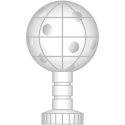Werner Heel
 | ||||||||||||||||
| Data i miejsce urodzenia | ||||||||||||||||
|---|---|---|---|---|---|---|---|---|---|---|---|---|---|---|---|---|
| Klub | G.S. Fiamme Gialle | |||||||||||||||
| Wzrost | 184 cm | |||||||||||||||
| Debiut w PŚ | ||||||||||||||||
| Pierwsze punkty w PŚ | ||||||||||||||||
| Pierwsze podium w PŚ | ||||||||||||||||
| Dorobek medalowy | ||||||||||||||||
| ||||||||||||||||
| Strona internetowa | ||||||||||||||||
Werner Heel (ur. 23 marca 1982 w Merano) – włoski narciarz alpejski specjalizujący się w konkurencjach szybkościowych. W 2010 roku wystartował na igrzyskach olimpijskich w Vancouver, gdzie zajął czwarte miejsce w supergigancie, przegrywając walkę o podium z Andrew Weibrechtem z USA o 0,02 sekundy. Na rozgrywanych cztery lata później igrzyskach w Soczi wystąpił w zjeździe i supergigancie, jednak plasował się poza czołową dziesiątką. Był też między innymi siódmy w zjeździe podczas mistrzostw świata w Val d’Isère w 2009 roku. Najlepsze wyniki w Pucharze Świata osiągnął w sezonie 2008/2009, kiedy to zajął 16. miejsce w klasyfikacji generalnej, a w klasyfikacji supergiganta uplasował się na drugim miejscu. Był też trzeci w klasyfikacji zjazdu w sezonie 2009/2010. W 2019 r. zakończył karierę[1].
Osiągnięcia
Igrzyska olimpijskie
| Miejsce | Dzień | Rok | Miejscowość | Konkurencja | Czas biegu | Strata | Zwycięzca |
|---|---|---|---|---|---|---|---|
| 12. | 15 lutego | 2010 | Zjazd | 1:54,31 min | +0,88 s | ||
| 4. | 19 lutego | 2010 | Supergigant | 1:30,34 min | +0,33 s | ||
| 12. | 9 lutego | 2014 | Zjazd | 2:06,23 min | +0,93 s | ||
| 17. | 16 lutego | 2014 | Supergigant | 1:18,14 min | +1,60 s |
Mistrzostwa świata
| Miejsce | Dzień | Rok | Miejscowość | Konkurencja | Czas biegu | Strata | Zwycięzca |
|---|---|---|---|---|---|---|---|
| 27. | 6 lutego | 2007 | Supergigant | 1:14,30 min | +1,44 s | ||
| DNF | 8 lutego | 2007 | Superkombinacja | 2:28,99 min | - | ||
| 14. | 4 lutego | 2009 | Supergigant | 1:19,41 min | +2,47 s | ||
| 7. | 7 lutego | 2009 | Zjazd | 2:07,01 min | +1,20 s | ||
| 8. | 9 lutego | 2011 | Supergigant | 1:38,31 min | +1,82 s | ||
| 22. | 12 lutego | 2011 | Zjazd | 1:58,41 min | +3,38 s | ||
| 20. | 6 lutego | 2013 | Supergigant | 1:23,96 min | +2,04 s | ||
| 16. | 9 lutego | 2013 | Zjazd | 2:01,32 min | +2,18 s | ||
| 26. | 5 lutego | 2015 | Supergigant | 1:15,68 min | +1,85 s | ||
| 32. | 7 lutego | 2015 | Zjazd | 1:43,18 min | +2,70 s |
Puchar Świata
Miejsca w klasyfikacji generalnej
- sezon 2004/2005: 136.
- sezon 2005/2006: 83.
- sezon 2006/2007: 74.
- sezon 2007/2008: 24.
- sezon 2008/2009: 16.
- sezon 2009/2010: 18.
- sezon 2010/2011: 34.
- sezon 2011/2012: 97.
- sezon 2012/2013: 16.
- sezon 2013/2014: 40.
- sezon 2014/2015: 38.
Zwycięstwa w zawodach
 Kvitfjell – 29 lutego 2008 (zjazd)
Kvitfjell – 29 lutego 2008 (zjazd) Val Gardena – 19 grudnia 2008 (supergigant)
Val Gardena – 19 grudnia 2008 (supergigant) Åre – 12 marca 2009 (supergigant)
Åre – 12 marca 2009 (supergigant)
Pozostałe miejsca na podium w zawodach
 Kvitfjell – 1 marca 2008 (zjazd) – 3. miejsce
Kvitfjell – 1 marca 2008 (zjazd) – 3. miejsce Lake Louise – 28 listopada 2009 (zjazd) – 2. miejsce
Lake Louise – 28 listopada 2009 (zjazd) – 2. miejsce Val d’Isère – 12 grudnia 2009 (supergigant) – 3. miejsce
Val d’Isère – 12 grudnia 2009 (supergigant) – 3. miejsce Kitzbühel – 23 stycznia 2010 (zjazd) – 3. miejsce
Kitzbühel – 23 stycznia 2010 (zjazd) – 3. miejsce Val Gardena – 14 grudnia 2012 (supergigant) – 3. miejsce
Val Gardena – 14 grudnia 2012 (supergigant) – 3. miejsce Kvitfjell – 3 marca 2013 (supergigant) – 3. miejsce
Kvitfjell – 3 marca 2013 (supergigant) – 3. miejsce
- W sumie (3 zwycięstwa, 1 drugie i 5 trzecich miejsc).
Przypisy
- ↑ Jarosław Gracka: Alpejski PŚ: Frida Hansdotter i Werner Heel. sportsinwinter.pl. [dostęp 2021-07-27].
Bibliografia
- Oficjalna strona
- Profil na stronie FIS (niem. • ang. • fr.)
- Profil na Sports Reference.com. sports-reference.com. [zarchiwizowane z tego adresu (2010-06-16)]. (ang.)
Media użyte na tej stronie
Pictograms of Olympic sports - Alpine skiing
Olympic Rings without "rims" (gaps between the rings), As used, eg. in the logos of the 2008 and 2016 Olympics. The colour scheme applied here pertains to the 2016 Olympics in Rio de Janeiro.
Olympic Rings without "rims" (gaps between the rings), As used, eg. in the logos of the 2008 and 2016 Olympics. The colour scheme applied here pertains to the 2016 Olympics in Rio de Janeiro.
Flag of Canada introduced in 1965, using Pantone colors. This design replaced the Canadian Red Ensign design.
The flag of Navassa Island is simply the United States flag. It does not have a "local" flag or "unofficial" flag; it is an uninhabited island. The version with a profile view was based on Flags of the World and as a fictional design has no status warranting a place on any Wiki. It was made up by a random person with no connection to the island, it has never flown on the island, and it has never received any sort of recognition or validation by any authority. The person quoted on that page has no authority to bestow a flag, "unofficial" or otherwise, on the island.













